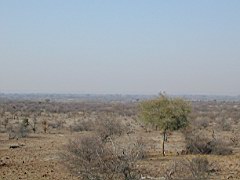
Landscape near Tuli Nature Reserve, located in the southeast corner of Botswana |

Our first tour was with Gecko's, an Australian company |

The typical canvas tents we lived in for the next four weeks |

Our facilities for the first night. Well at least they flushed, but watch out for scorpions! |
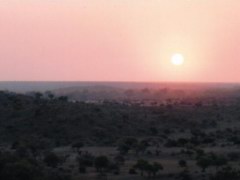
Sunset over Tuli |

Elephants! Finally some real wildlife after just seeing elephant dung the previous day |

Elephants are very destructive creatures and will eat up to 150Kg of food a day |

|
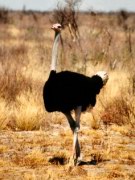
Ostrich |

Giraffes at a public nature park near Maun |

|

And you can get quite close too! |

The Makgadikgadi salt pan. Some the largest salt pans in the world and they stretch as far as the eye can see. During rainy season, the pan floods and brine shrimp hatch and provide food for many birds |

On top of the bus watching sunset at the pan |
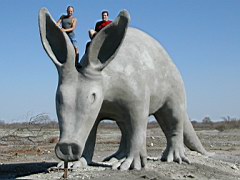
The Aardvark attraction near the salt pan. There's also a bar across the road. I hid a cache here |

To visit the Okavango Delta required quite a bit of alternative travel, including the back of a pickup truck |
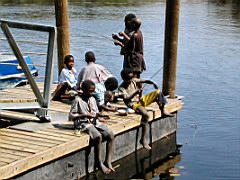
Boys fishing at a dock |
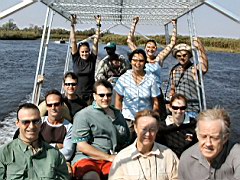
The speedboat was a fun part of the journey, complete with croc and hippo sightings |
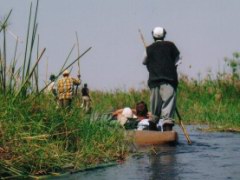
The entire group took dug-out canoes called 'Mokoro' canoes through the delta to the bush camp for the night |

The Okavango is a river delta that never reaches the sea, instead it spreads out over a large area and water is lost to evaporation |

The mokoros are pushed by polers, who belong to a co-operative. |
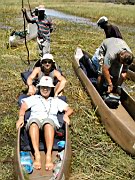
The original mokoros were made from hollowed out trees and lasted a couple of years. Now most of these boats are plastic and fiberglass |
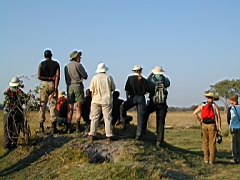
A bushwalk through the delta lead us to a few animals |

Including some zebras |

All along the highways in Botswana you see wild donkeys feeding. Many years ago they were released by the farmers due to modernization to the automobile. This was the only donkey I saw pulling a cart |
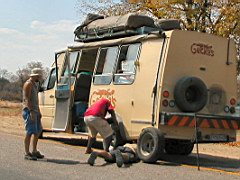
Blown tyre. One of many mechanical issues that we had with this tour... |
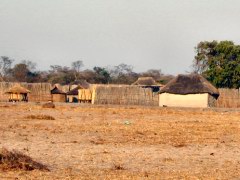
Typical houses in this area of Africa |
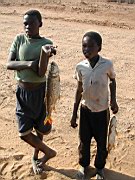
These boys caught these fish in the Okavango |
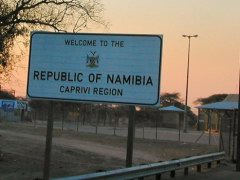
Welcome to Namibia's Caprivi Strip, a highly disputed area of Namibia that until very recently was dangerous to visit |
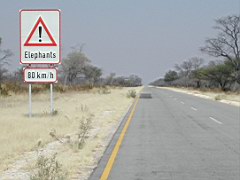
I didn't know that elephants could move THAT fast! |
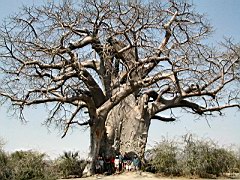
A giant Baobab tree. I hid a cache here |

More elephants in the Caprivi Strip |
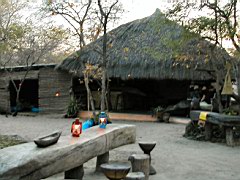
The bar at the Ngepi camp site. Nice grass lawns, satellite TV, and a very nice place to stay the night |

Ngepi is next to a river and they have a swimming hole with fence around it to keep out the crocs and hippos. |

Ah, rest... |

Another breakdown. This time it was lack of diesel and the outside temperature was in the high 30's |
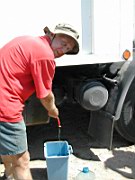
Use whatever you can to fix the problem. Here Eddie uses a hose from our campstove, a garbage can to siphon diesel from another truck, and a couple of 5L water bottles to store the fuel, plus a cut water bottle as a funnel |
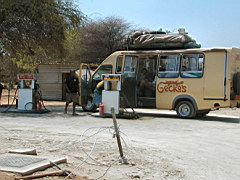
The nearest diesel station fortunately had some fuel for sale, otherwise 5L wouldn't have got us too far |

Waiting for a couple of blown tyres to be fixed, or maybe not after 4 hours of waiting |
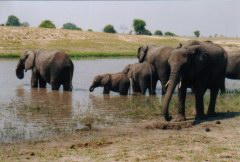
Back to Botswana and to Chobe National Park, with the largest concentration of elephants in the world (43,000) |

The park actually has too many elephants and other species are suffering |
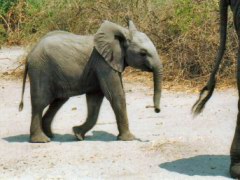
|
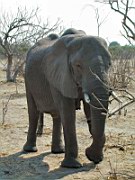
|

Baboons |

|

Various wildlife on the open plains |

Impala |
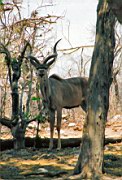
Kudu |

Hundreds of Cape Buffalo |

And they weren't looking too happy! |

A pride of lions had just taken one of them |
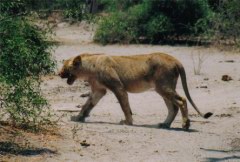
Walking away after the feast with blood around his mouth |
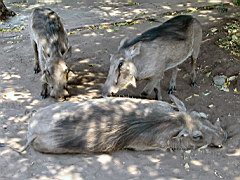
Warthogs get quite aclimatized to people. This is mom and her two babies -- quite friendly! |
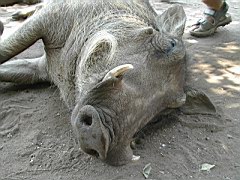
These huge tusks protect warthogs from many predators |

Unchanged from dinosaur ages, crocs are still one of the most successful predators |
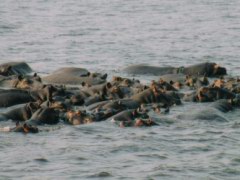
Lots of hippos in the water during the day to keep cool |

Hippos can open their mouths up to 135°! |

Sunset in Chobe |

The Kazangula Ferry between Botswana and Zambia. There were two of them until the week before we arrived. One flipped over in the river from an unbalanced load and several people were killed by crocs and hippos in the river |

This ferry is in extremely bad shape. One motor doesn't work, two of the ramps don't operate, and there's a giant hole in the deck, where a shipping skid has been added as a temporary measure. |

